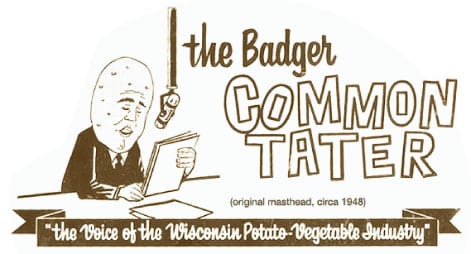
Department of Soil Science
Fall Manure & Cover Crops
by Matt Ruark
Nutrient management in dairy productions systems produces both challenges and opportunities on sandy soils.
One of the big challenges is efficient use of manure nutrients if the manure is applied in the fall. There are challenges with fall manure application on all soils, but the lack of nutrient retention and high leaching potential of sandy soils adds to the challenge.
In general, since only a portion of the manure N is in a mineral form (e.g. ammonium), N leaching from manure would be less compared to inorganic fertilizer, which is why fall application of N fertilizer is not recommended on sandy soils.
Now, there are many management practices associated with fall manure application that can alleviate some of these challenges.

The first is application timing. Manure applied in September or early October has a much greater chance to leach out compared to manure applied in November.
The later application date means a reduction number of leaching events and cooler temperatures that will slow mineralization (the microbial conversion of organic N to plant available N).
The second is addition of N stabilizers (e.g. nitrapyrin) to the manure. This will protect against rapid mineralization of the organic N in the manure during warm fall periods, keeping the N in an organic form until mineralization picks up again in the spring.
To address the issue of fall-applied manure on sandy soil, the Wisconsin Fertilizer Research Council funded research to study how cover crops can influence the N balance of this system.
In 2014, research was established at the Hancock Agricultural Research Station. Liquid dairy manure was applied on September 26 following corn silage harvest. The manure was surface applied and then incorporated within 1 to 3 hours.
Three cover crop species (winter rye, annual ryegrass and spring barley) and one forage crop (triticale) were drilled on October 1 (Figure 1).

Winter ryegrass and triticale survived the winter, while annual ryegrass and spring barley did not. Triticale was harvested in the spring as a forage crop.
The positive aspect of surviving the winter is that wind erosion control is maintained during the spring. The disadvantage of surviving the winter is that the cover crops need to be chemically or mechanically terminated (or both) adding to labor costs.
The study continued during the 2015 growing season to assess the effects of the cover crops on corn grain yield and corn grain response to N fertilizer.

The corn grain following triticale was planted three weeks later than all other cover crop treatments, reflecting the difference in planting date that occurs when needing to let the triticale grow to optimum maturity for silage.
An additional treatment was added where corn yields were assessed following no fall manure or cover crop.
Use of fall manure did not lead to an increase in corn grain yields compared to plots without fall manure, and no N “credit” was detected, as the optimum N rate was similar for each curve in Figure 2.
This highlights one of the main concerns about fall application of manure N – how much is used by the next crop?
Manure analysis indicated that there would be a 100 lb-N/acre N credit, meaning that corn yields should start to plateau at N rates 100 lb-N/acre less than corn yields without manure.

This data clearly suggests that additional practices (later application, use of nitrapyrin) are necessary reduce N losses and increase the economic value of the manure N.
None of the cover crops (winter rye, annual ryegrass, or spring barley) influenced corn grain yields or response to N (corn yield response to winter rye is shown in Figure 3).
Conversely, corn grain yields were lowered following triticale (Figure 3), reflecting both a later planting date and perhaps some additional competition for water and nutrients.
The lack of response to the cover crops means two things: (1) that the cover crops are not tying up available N (i.e. it is not making the manure N or fertilizer N less plant available) and (2) it is not making the manure N any more available (i.e. the N taken up in the plant biomass from manure N is not made plant available to the next crop in a timely fashion).
Thus, cover crops as an erosion control tool are having no influence on the crop production system (positively or negatively).
Before termination there was about 0.5 ton/acre of dry matter biomass for the winter rye, but there was only 16 lb-N/acre measured in the above ground biomass, so only a small amount of the manure N was taken up.
The triticale had closer to 1 ton/acre of dry matter biomass, but also had a relatively low N content, with only 27 lb-N/acre in the above ground biomass.
Therefore, the reduction in yield is more likely due to the later planting date rather than competition for N.
So where do we go from here? We are continuing this research for at least two more years to assess if this is the common occurrence or if it is a one-year anomaly.
There are two distinct “seasons” at work here – the fall season that influences cover crop growth and potential N leaching and the corn grain season that influences corn growth, N uptake and N mineralization.
While it is still unclear what the probability is that there is not a manure-N credit for fall applications on sandy soil, it is clear that there is an economic risk to this application (if using N credits) and cover crops may not be effective against the environmental risk to water quality.



